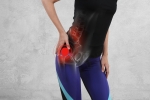Home » Blog
| Stem Cell, PRP, Acupuncture in Queens & Long Island, New York
Blog | Stem Cell, PRP, Acupuncture in Queens & Long Island, New York
Physical therapy, a component of rehabilitation, involves exercising and manipulating the body with an emphasis on the back, upper arms, and legs. It can improve joint and muscle function, helping people better stand, balance, walk, and climb stairs. Techniques include: Range-of-motion exercises, Muscle-strengthening exercises, Coordination and balance exercises. Ambulation (walking) exercises, General conditioning exercises, Transfer training, Use of a tilt table.
Read more
The field of regenerative medicine is rapidly expanding to help repair parts of your body that no longer function as well as they should due to injury or the natural aging process. The expert physicians provide patients with cutting-edge therapies of regenerative medicine. What is Regenerative Medicine? According to the National Institute for Health, regenerative medicine is the process of creating living, functional tissues to repair or replace tissue that no longer works as a result of disease, age, damage, or birth defects.
Read more
Opioid withdrawal is a complex subject and can be a worrying topic. Opioid Basics - Opioid withdrawal refers to reducing your usage of opioids until you can stop taking the medication completely. You might also hear this referred to as detoxification. Before we get started with your opioid withdrawal options, we’ll cover some basic information.
Read more
Benefits Of Physical Therapy - Depending on the reason for treatment, the benefits of physical therapy may include: pain management with reduced need for opioids, avoiding surgery, improved mobility and movement, recovery from injury or trauma, recovery from stroke or paralysis
fall prevention, improved balance, management of age-related medical problems. A sports therapist can help an athlete maximize their performance by strengthening specific parts of the body and using muscles in new ways.
Read more
You might have heard that chronic pain can be managed but not cured. As science has developed, we have now learned that’s not the case. While pain management is a big part of living with a chronic pain condition, there are lots of effective treatments which can reduce chronic pain symptoms and even help an individual overcome their chronic pain.
Read more
Physical therapy (PT) can help manage movement and reduce pain in people with neurological diseases, those who have had traumatic injuries, and other conditions. Trained professionals evaluate and take measures to enhance a person’s physical function. According to the American Physical Therapy Association (APTA), physical therapists are trained and licensed movement experts. They can diagnose and treat a range of injuries, disabilities, and health conditions.
Read more
Becoming a physical therapist is no easy journey. Any hopeful must earn a bachelor’s degree in a related field, then complete a three-year (on average) doctorate program to receive their doctorate of physical therapy (DPT). To earn a license to practice in their state, they must also pass the National Physical Therapy Exam (NPTE) and any additional state licensing guidelines.
Read more
After work, like many other Americans, you head to the gym. As you’re doing your usual weight-lifting routine, you feel a muscle spasm in your shoulder, not in a good way. As you stand there nursing the site of the pain, all sorts of thoughts begin to rush through your mind: Should you put heat or ice on it? Do you need a sling or a brace? How bad is this injury? What should I do first to relieve the pain? As you ponder these questions, the frustration sets in, and you realize how much this pain will impact your daily routine, especially your workouts.
Read more
Headaches And Orofacial Pain - Chronic headaches can vary in severity and can be very debilitating to live with. Orofacial pain refers to pain that is felt in the face, mouth, or jaw area. Migraine - There are a few types of migraines that can vary in severity. Migraines are common and, for some people, can be experienced frequently throughout the day or week.
Read more
The cause of your hip pain may be the result of a variety of problems that begin in your hip joint, your spine, or your groin. Expert physicians help patients determine the underlying cause of hip pain to create the most effective treatment plan for them. What Causes Hip Pain? While the pain in your hip may be commonly occurring, the potential causes are varied, so there’s no one-size-fits-all way to treat it. You may feel pain in one or both hips if you have a problem with your joints, spine, or buttocks. Hip pain may also be the result of problems with your muscles, tendons, or ligaments.
Read more
Love this Post? Spread the World






















